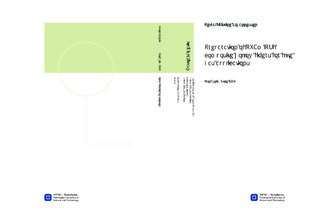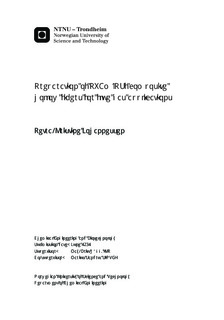| dc.contributor.advisor | Hägg, May-Britt | nb_NO |
| dc.contributor.advisor | Sandru, Marius | nb_NO |
| dc.contributor.author | Johannessen, Petra-Kristine | nb_NO |
| dc.date.accessioned | 2014-12-19T13:23:49Z | |
| dc.date.available | 2014-12-19T13:23:49Z | |
| dc.date.created | 2013-06-16 | nb_NO |
| dc.date.issued | 2012 | nb_NO |
| dc.identifier | 629229 | nb_NO |
| dc.identifier | ntnudaim:8028 | nb_NO |
| dc.identifier.uri | http://hdl.handle.net/11250/248377 | |
| dc.description.abstract | Polysulfone (PSf) hollow fibres as support for Fixed-Site-Carrier (FSC) polyvinylamine (PVAm)/PSf composite membranes used for CO2 capture were attempted optimized by increasing the air gap and take-up speed during spinning. The goal was to produce fibres with a porous structure, a high CO2 permeance, as few macrovoids and surface defects as possible. Most of the produced fibres coated with polydimethylsiloxane (PDMS) showed high CO2 permeance but low CO2/N2 selectivity. This is most likely caused by big holes and defects present on the PSf fibre surface. The reason for these defects was determined to be too much elongational stress applied to the PSf fibres during spinning as a consequence of the high air gap and take-up speed, causing the top layer to be stretched leading to defects in the surface. It is to be noted that fibres produced during this project were the results of a very first spinning using the new spinning machine. This introduced several untested factors such as new spinneret, new take-up system and other factors affecting the hollow fibres produced. Some of the spun PSf fibres were coated with PVAm and PDMS in order to produce PVAm/PSf composite membranes. The FSC composite membranes were tested by gas permeation at different pressure and with various sweep flow rates. When the pressure was increased, a strong decrease of CO2/N2 selectivity was observed. A decrease in CO2/N2 selectivity is expected to a certain degree due to saturation of the carriers, but the large decrease was believed to be caused by reopening of surface defects due to increased pressure. This was supported by an increase in N2 permeance when the pressure was increased. The CO2 permeance decreased more for the PVAm/PSf composite membrane compared to the PSf fibre coated only with PDMS. The reason for this could be that PVAm penetrated into the porous structure of the PSf support, reducing the gas permeance through the membrane, caused by the large number of surface defects and holes at the surface of the PSf supports. The PVAm/PSf composite membranes did not obtain a better CO2/N2 selectivity than the best PVAm/PSf composite membrane from the specialization project. The best obtained results was a CO2 permeance of 0.15 m3(STP)/(m2 bar h) and a CO2/N2 selectivity of 88. The PVAm concentration was increased from 0.2% to 1% in the PVAm/PSf blend during the master thesis. This was performed by introducing more of the selective material PVAm directly into the spinning dope. The desired result was an increase in effect of PVAm polymer on the separation properties of the 1% PVAm/PSf blend hollow fibres. The influence and presence of the 0.2% PVAm content in the PVAm/PSf blend membrane was detected by differential scanning calorimetry (DSC) and during gas permeation tests with humidity. The CO2/N2 selectivity increased with increased relative humidity in the feed, which increases the ability of the PVAm to transport CO2 molecules by facilitated transport. The 1% PVAm/PSf blend hollow fibres showed no indication of the presence of PVAm during DSC. One reason for this result may be that PVAm and PSf had separated, because the dope solution was ready some time before the spinning rig was available. This might have caused uneven distribution of PVAm. Another reason could be that PVAm and PSf had reacted in the polymer solution. As the amount of PSf is much higher than PVAm, the DSC curve would indicate mostly PSf. This is supported by the indication of PVAm from the humidity test. The results from gas permeation tests showed that the 1% PVAm/PSf blend membrane had better separation properties than the 0.2% PVAm/PSf blend membrane. This indicates that PVAm was present in the 1% PVAm/PSf blend membrane as well, even though the DSC gave no evidence of PVAm. One of the 1% PVAm/PSf blend membranes exhibited a CO2 permeance of 0.05 m3(STP)/(m2 bar h) and a CO2/N2 selectivity from 57 to 133 when the sweep flow rate changes from 5 to 47 ml/min. For pressure ranging from 1.2 bar to 8 bar, the membrane had a CO2 permeance from 0.1 to 0.07 m3(STP)/(m2 bar h) and a CO2/N2 selectivity from 70 to 56. | nb_NO |
| dc.language | eng | nb_NO |
| dc.publisher | Institutt for kjemisk prosessteknologi | nb_NO |
| dc.title | Preparation of PVAm/PSf composite hollow fibers for flue gas applications | nb_NO |
| dc.type | Master thesis | nb_NO |
| dc.source.pagenumber | 117 | nb_NO |
| dc.contributor.department | Norges teknisk-naturvitenskapelige universitet, Fakultet for naturvitenskap og teknologi, Institutt for kjemisk prosessteknologi | nb_NO |

